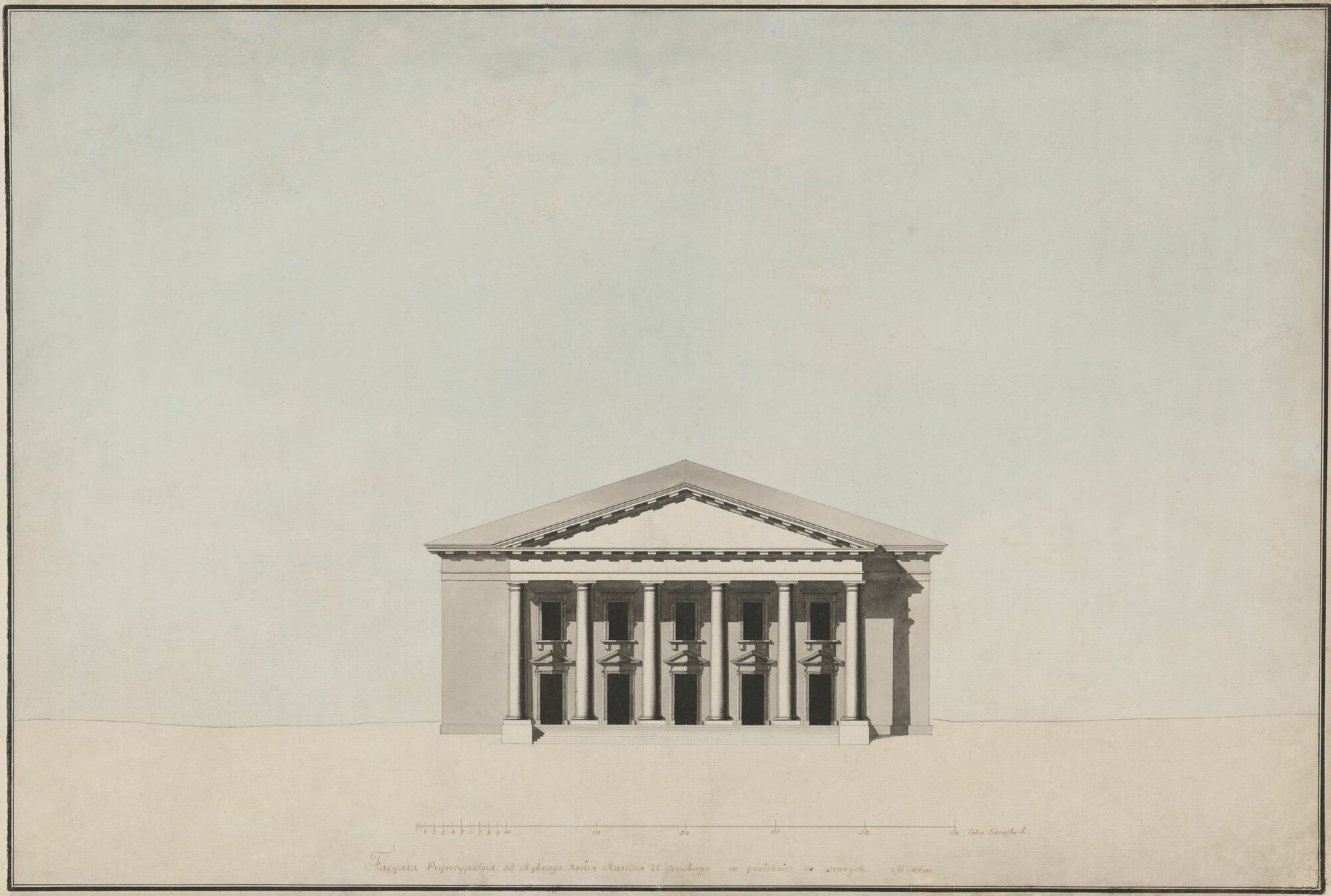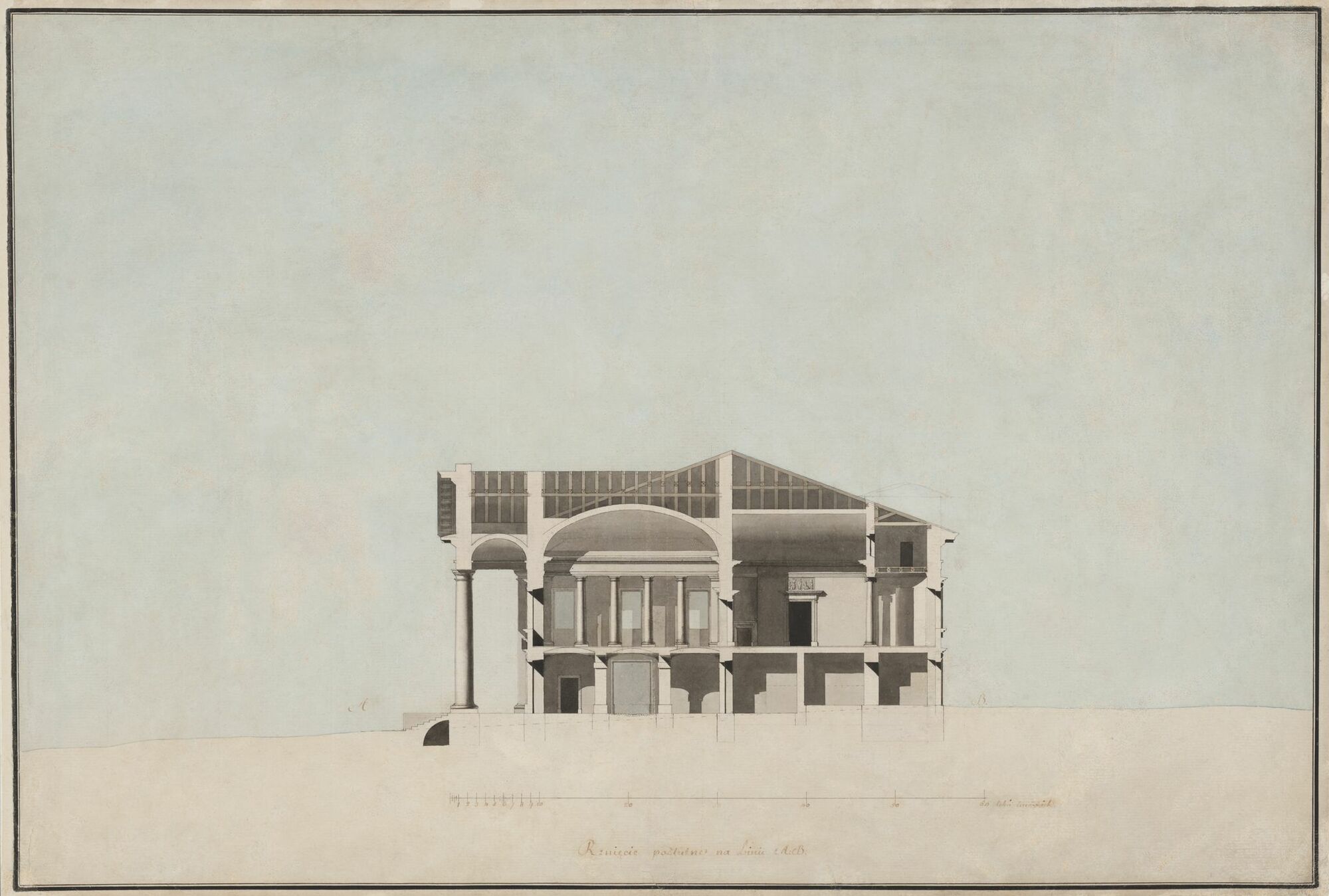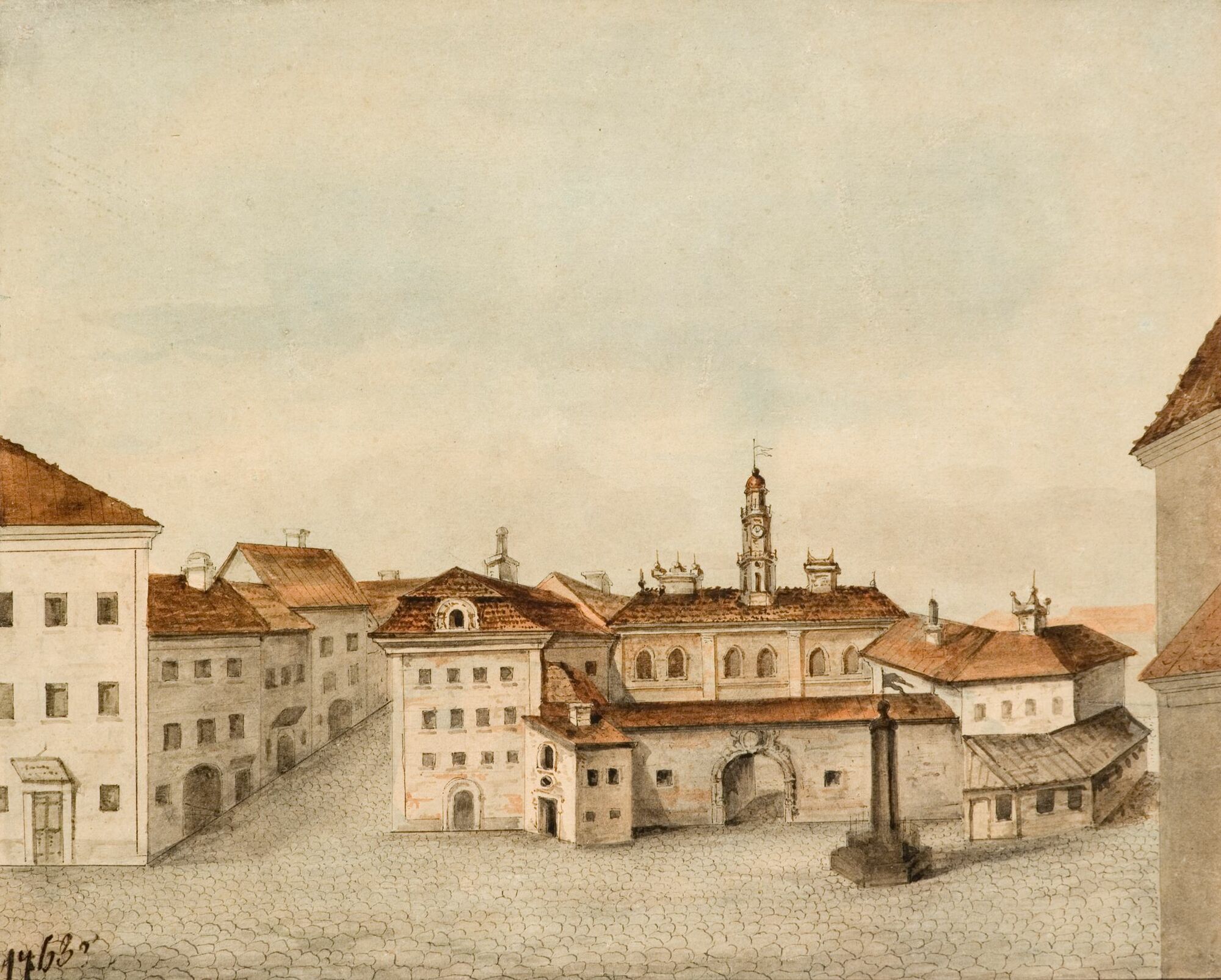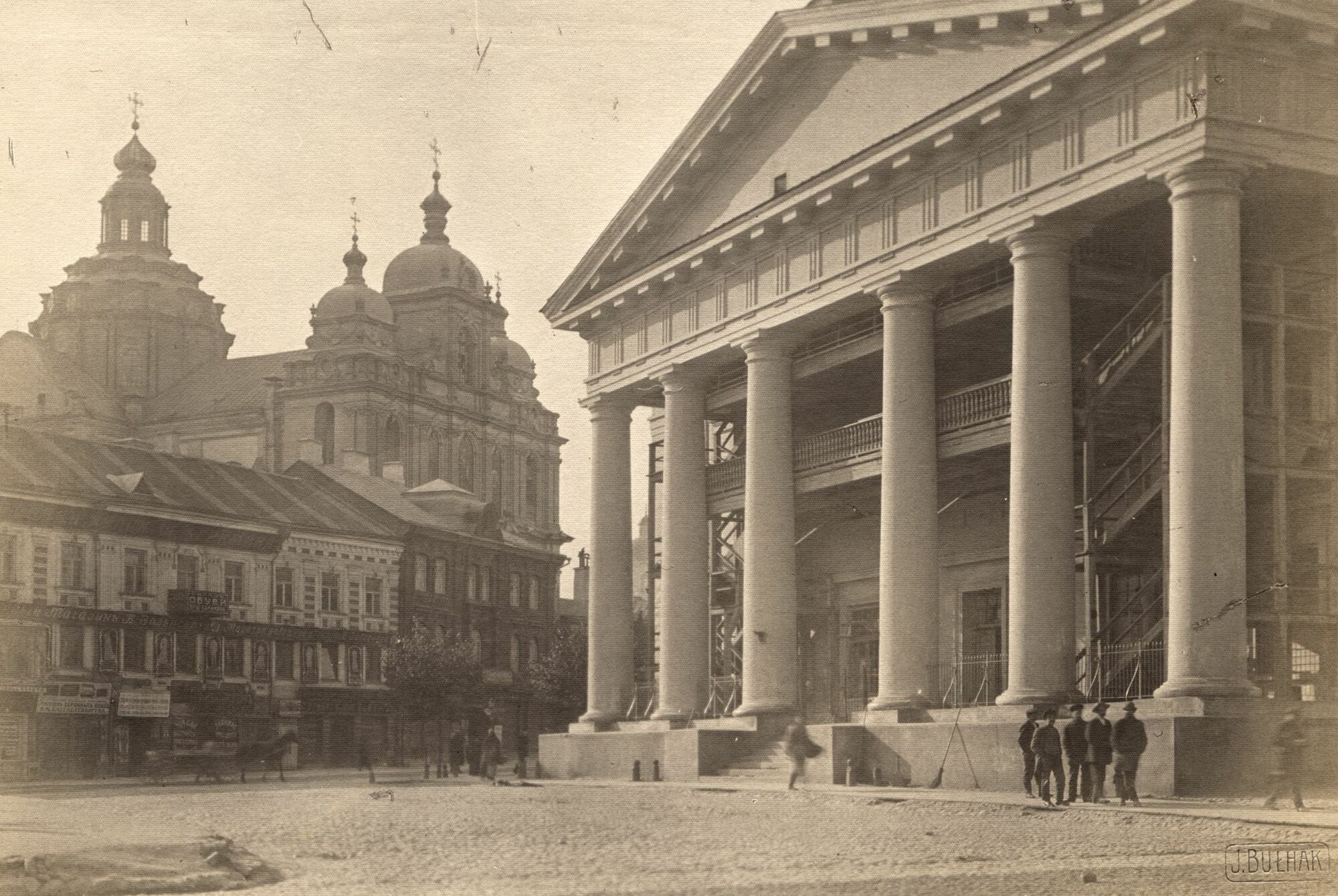
31 Didžioji Street – Vilnius Town Hall. 2019
Photographer Tomas Kapočius
Lithuanian Art Museum
Vilnius was granted the Magdeburg Rights, which ensured the internal autonomy, in 1387 yet the location and date of the first town hall remain unidentified. The Town Hall had been built on its current site by the early 1500’s. Its old cellars have been preserved to this day. It was a two-storey Gothic-style structure with a tower, with shops standing next to it. In the mid-1700’s, the town hall consisted of several buildings harbouring a covered yard, with the main gate on the western side. It was occupied by the court, prison, security building, archive, treasury, weaponry and other storage facilities, scales, fire equipment. It had shops of local and foreign merchants. The top floor belonged to the City Magistrate and the Council of Merchants. In the 17-18th centuries, the Town Hall was devastated by a number of fires that ruined the tower. Johann Christoph Glaubitz undertook the reconstruction of the Town Hall following the 1748 and 1749 fires. His unfinished work was continued by architect Tommaso Russel. A decade after the reconstruction, the tower started leaning. Architect Laurynas Gucevičius undertook its repair but the tower collapsed during the foundation reinforcement works. Gucevičius then drafted several designs for the reconstruction of the entire Town Hall and it was rebuilt by 1799. In 1844, the Vilnius Magistrate was transferred to another premises on Dominikonų st. and the Town Hall was adapted for the City Theatre, which set up here in 1845 and operated until 1924. In 1936–1940, the Town Hall was renovated in accordance to the Gucevičius blueprints. It became the venue for the Vilnius City Museum, which was reorganised into Vilnius Art Museum in 1941, LSSR Art Museum in 1965, and Lithuanian Art Museum in 1990. The building became the venue of the Lithuanian Artists’ House in 1995 before resuming its status as the Vilnius Town Hall in 1999.

Laurynas Gucevičius (1753–1798)
Facade of Vilnius Town Hall. 1785–1786
Paper, watercolour, ink
Lithuanian Art Museum

Laurynas Gucevičius (1753–1798)
Longitudinal section of Vilnius Town Hall. 1785–1786
Paper, watercolour, ink
Lithuanian Art Museum

Marceli Januszewicz (1806– after 1863)
Vilnius Town Hall in 1763. Mid-19th century
Paper, watercolour
Lithuanian Art Museum

Jan Bułhak (1876–1950)
Town Hall and the Church of St. Casimir. 1912
Lithuanian Art Museum
MUNDYUS (ŁUKASZ MARKOWICZ, early 16th century– around 1584)
16th century citizen of Vilnius, active participant of radical Reformation, practitioner of Arianism. Sought a career in municipality. From 1545 on, was elected for several terms as an assessor. Litigated over his inheritance and the right to a vodka production monopoly, charging the City Council with failure to carry out justice. The financial dispute grew into a political conflict in 1551. In 1553, he was elected an annual burgomaster, a title which he also claimed later on but was ignored by the City Council due to the conflict until he was removed from duty for life in 1556 and subsequently referred to only as a „citizen of Vilnius.“ The case that spanned over three decades involved the vogt of Vilnius Augustinus Rotundus Mieleski, voivodes of Vilnius Mikołaj „the Black“ Radziwiłł and Mikołaj „the Red“ Radziwiłł, ruler Sigismund Augustus, Duke of Prussia Albrecht Hohenzollern, Holy Roman Emperor Ferdinand I. Mundyus sought to resume the duty of Burgomaster until the end of his life. He was put to prisons at Vilnius Town Hall and Vilnius Castle for defiance of the King.
AUGUSTINUS ROTUNDUS MELESKI (around 1520–1582)
General secretary to the Grand duke, vogt of Vilnius, first professional historian in Lithuania. Beginning in 1539, studied at the universities of Wittenberg and Padua, acquired a PhD in ecclesiastical and secular law. From 1544 served in the Chancellery under Sigismund The Old, Sigismund Augustus, Henry Valois, Stefan Batory. Assigned as voigt of Vilnius in 1551, became loyal to Lithuania, looked after the expansion of Vilnius. The chief administrator of the city was based at the Town Hall. As a lawyer, contributed to the Act of Union of Lublin, treaties with other states, wills of Lithuanian noblemen and other important documents. Participated in the commissions for preparation of the Second and Third Statutes of Lithuania. Wrote the Lithuanian Chronicles (started around 1555) and co-authored a polemic work Conversations of Pole with Lithuanian (Rozmowa Polaka z Litwinem, 1564). Enobled in 1568 for his work and achievements. Intellectual, humanist, pro-Lithuanian politician, devout Catholic who helped consolidate the Catholic faith in Lithuania.